What an absolutely stunning collection of stories to add to your Christmas shelves. I hope that there is something for everyone to enjoy and many will become firm favourites for future years.
Middle grade reads

Farshore, 9780008666583
“The Christmas Carrolls, The Christmas Club” by Mel Taylor-Bessant and Selom Sunu is the final part of the trilogy featuring the Christmas Carrolls, a family so fixated by the festive season that they try and include it in their lives for the whole of the year. Having won a competition in the previous book, they find themselves in New York, to take part in the Christmas parade; but then they receive a mysterious invitation to try and join the “Christmas Club”, something that they thought was just a fairy tale. A totally fantastic and exciting story that sees the family facing some of their greatest challenges yet. It is a totally fabulous series to get you into the Christmas spirit.
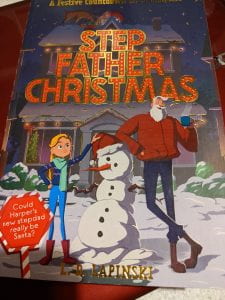
Orion, 9781510112933
“Step Father Christmas” by L D Lapinski is about siblings Harper and Will, and what happens when their mother invites her new boyfriend to stay for Christmas. His name is Nick and he has grey hair and beard, which leaves Harper wondering whether he could actually be Father Christmas. This is a brilliant story for getting you in the festive mood and it has been written in 25 chapters, so you can use it as an Advent calendar to be read every day.
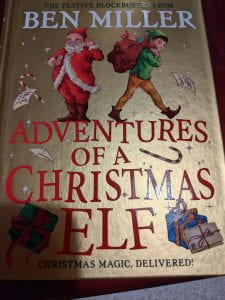
Simon & Schuster, 9781398515840
“Adventures of a Christmas Elf” by Ben Miller, illustrated by Chris Naylor and Daniela Jaglenka Terrazzini is the third in the series featuring Holly Claus and Tog, the Elf. After the excitement of book two, things seem to have settled down at the Workshop. But when Santa starts feeling tired and decides to take a short holiday, problems start to happen and the two young heroes step up to the challenge and save Christmas, yet again. It is a tale of redemption (for some) and also how important family can be.
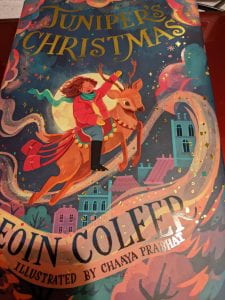
HarperCollins, 9780008475536
“Juniper’s Christmas” by Eoin Colfer and Chaaya Prabhat is set in a world where Father Christmas has not been seen for ten years and children are forgetting about him. Some do remember the stories told by parents and long for Santa to reappear. Juniper lives with her mother, near one of the London parks, where her father had worked, but when her mother disappears she ask for help from one of the homeless people who find shelter in the wood. But then she discovers his secret, he is Father Christmas. This is a story about helping each other, friendship and evil people who are only interested in themselves. what a fantastic story and so very relevant in the world we inhabit at the moment.

Penguin, 9780241595879
“A Christmasaurus carol” by Tom Fletcher and Shane DeVries. this series featuring the hero William and the last Christmasaurus is fast becoming one of my treats for the Christmas season. There is a mix of fun and also some serious subjects. In this story, the spirit of Ebenezer Scrooge is transported to our time and is determined to get rid of Christmas (as you can guess it is the character, BEFORE the three spirits of Christmas visited him). The question is whether William and his friends can save the day and send Scrooge back into the book “A Christmas Carol”, so that he can change his ways.
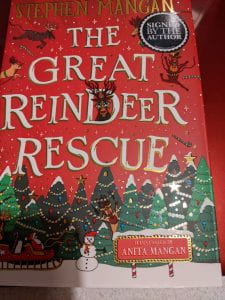
Scholastic, 9780702330827
“The Great reindeer Rescue” by Stephen Mangan and Anita Mangan is one of those totally silly yet lovable stories, where really quirky things happen. In this case, Dave, the newest reindeer is startled by Rudolph farting (!!) and accidentally un-clips part of the harness, so Rudolph continues his journey whilst the others are left behind with the sleigh, and then due to a malfunction, Santa and the others are sent to different parts of the globe. At this point, a young girl called Holly enters the scene and endeavors to find the missing sleigh and contents, with a bit of ‘help’ from Dave. A really great bit of fun for the holiday season.
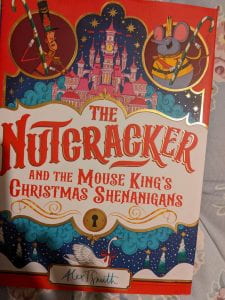
Macmillan, 9781035028177
“The Nutcracker and the Mouse King’s Christmas Shenanigans” by Alex T Smith. Well the author has done it again. Another of his Christmas stories which are meant to be read over the Advent season. This is his interpretation of the famous ballet, “The Nutcracker” and features many of the same characters, but with a modern twist. It is absolutely fabulous and a future classic.
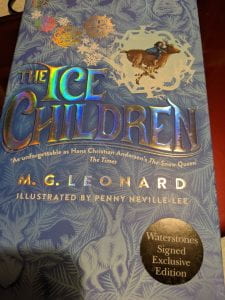
Macmillan, 9781035014217
“The Ice Children” by M G Leonard is a truly magical story, with echoes of the “Snow Queen” and even “The Lion, the Witch and the Wardrobe“. When her young brother is found frozen in the local park, and then each day more children become victims, Bianca faces some incredible dangers to try and release them from their frozen prisons. It is a wonderful tale about imagination, family love and needing balance in our world.
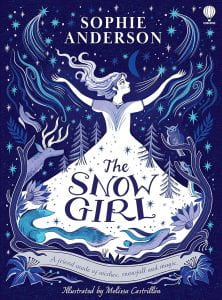
Usborne, 9781803704357
“The Snow Girl” by Sophie Anderson is about a young girl Tasha, who builds a snow girl with her grandfather. When the sculpture comes to life in the image of a girl called Alyana, it looks as if Tasha has achieved her wish of a best friend. But what will happen if spring does not arrive, and is Alyana to blame for this change in the seasons? A wonderful story of friendship, but also a cautionary tale about the way that we interact with nature, and the impact it can have on all our lives.
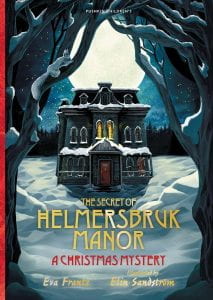
Pushkin, 9781782694205
“The Secret of Helmersbruk Manor” by Eva Frantz and Elin Sandstrom (translated by Annie Prime) is a wonderful surprise of a book. It is a translation from a Finnish book, but inspired by the stories of ghosts at Hampton Court Palace. When Flora and her mother move to Helmersbruk for Christmas, they don’t know that there are hidden secrets and mysteries to be solved. This is a creepy and yet inspiring story for the Christmas season

David Fickling, 9781788452694
“Adventuremice: mice on the ice” by Sarah McIntyre and Philip Reeve is the third in the series featuring the delightful and very adventurous mice. This time they face frozen seas and lots of danger, but as always, they work as a team and win the day.
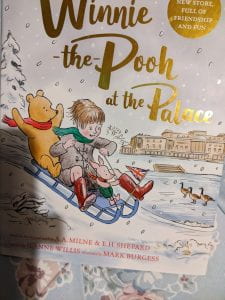
Macmillan, 9781529070415
“Winnie the Pooh at the Palace” by Jeanne Willis and Mark Burgess is a beautifully illustrated story of Pooh and Piglet going on a visit to the Palace with Christopher Robin. They have lots of fun in the snow and then find the king’s gold crown in a snow drift. They are then invited in for tea and honey, as a thank you. A delightfully whimsical story with a much loved bear, and friends.
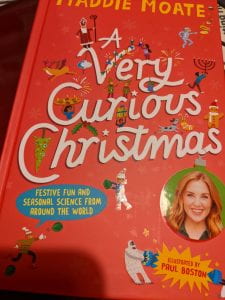
Penguin, 9780241652541
“A very curious Christmas” by Maddie Moate is one of those brilliant pot-potpourris, full of fascinating facts about Christmas. We all know that children ask the most bizarre questions about the festive season, so this book attempts to answer as many of them as possible. It is full of fun and facts and would make a brilliant present
Picture Books
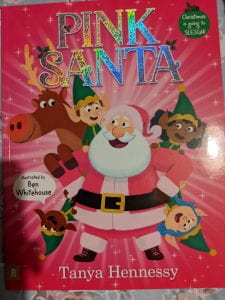
Macmillan, 9781761180675
“Pink Santa” by Tanya Hennessy and Ben Whitehouse is a super funny tale of what happens when Rudolph accidentally turns Santa’s coat PINK. Everyone is getting very worried, but Santa is not fazed by events and even paints his sleigh and all the decorations, to match. It has a lovely message about how good things can happen by accident
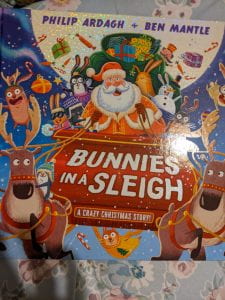
Walker books, 9781529507126
“Bunnies in a Sleigh” by Philip Ardagh and Ben Mantle is a new adventure for this set of fun loving bunnies. When the elves eat too many sweets on Christmas Eve, the bunnies have to help Santa deliver all of the presents and they do so; even if there are some hilarious escapades on the way. A great rhyming story by a delightfully funny author.
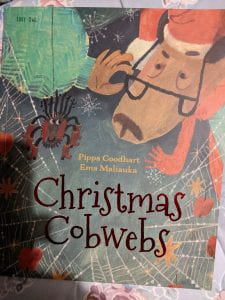
Tiny Owl, 9781910328934
“Christmas Cobweb” by Pippa Goodhart and Ema Maliauka is a delightful story about not forgetting that the joy of Christmas can be found in many things. When old bear decides to have a party for her friends, she spends time cleaning the house and making everything look lovely, but the pesky spiders keep spinning their webs and creating a mess. So bear is horrified to see webs hanging all over her tree, but then her friends point out how magical it looks and she learns to appreciate the beauty of a cobweb.
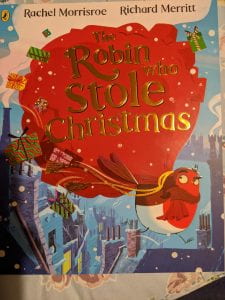
Penguin, 9780241489048
“The robin who stole Christmas” by Rachel Morrisroe and Richard Merritt brings a very different Robin to our attention; this is one that has close links to Ebenezer Scrooge and the Grumpus. To spoil Christmas for everyone, Rotten Robin decides to steal all of the presents as well as FATHER CHRISTMAS himself. How all the other robins save the day makes for a great fun story, with a lovely underlying message about kindness and sharing.
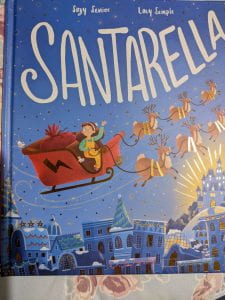
Little Tiger, 9781801045025
“Santarella” by Suzy Senior and Lucy Semple brings a delightful twist to the story of Cinderella. When her sisters are out at the ball, Cinderella is surprised by Santa falling down the chimney. Unfortunately he hurts his back and is going to have problems carrying sacks of gifts, so our adventurous heroine volunteers to help him deliver all of the gifts. When she is finally delivered to the palace, she decides that life has more to offer than being a princess and goes of on multiple adventures.
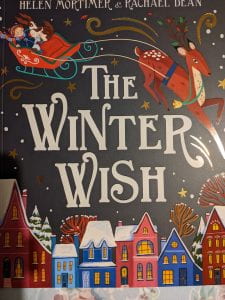
HarperCollins, 9780008497606
“The Winter Wish” by Helen Mortimer and Rachel Dean is the story of William, who lives in a small bookshop with his parents. Like many shops they are struggling to make end meet, so can a bit of Christmas magic turn things around and save the shop? A gorgeous tale about the importance of reading and books.
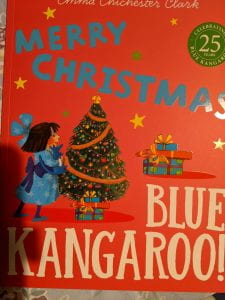
HarperCollins, 9780007197149
“Merry Christmas Blue Kangaroo” by Emma Chichester Clark was first published in 2004 and has been re-printed to celebrate 25 years of this favourite toy. It tells the story of preparing for the big day, from decorations to presents. When Blue Kangaroo magically comes alive, he sneaks downstairs to meet Father Christmas and asks if he can help find a present for Kangaroo’s owner. A delightful tale that has stood the test of time.
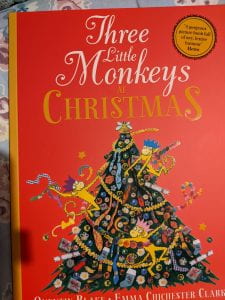
HarperCollins, 9780008413323
“The Three Little Monkeys at Christmas” by Quentin Blake and Emma Chichester Clark is full of anarchy and humour, as the three mischievous monkeys find ways to amuse themselves, on a visit to Hilda’s uncle, for Christmas. However, perhaps they can redeem themselves, when a burglar tries to steal a priceless golden teapot.

HarperCollins, 9780008552954
“The Burpee Bears, a Christmas Adventure” by Joe Wicks tells how the bears save their Christmas, when the weather gets so bad that they think grandma bear will not be able to reach them for Christmas. So they all decide to load of their sledge and go to visit her instead. things are proving difficult until Santa Bear appears on the scene and helps them get sorted. this is a charming story about the joy of family at Christmas.
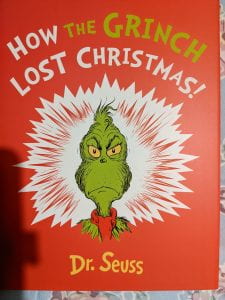
HarperCollins, 9780008626013
“How the Grinch lost Christmas” by Dr Seuss tells of what happens when the Grinch comes second in a Christmas tree competition, which makes him lose his Christmas spirit. However, the winner, a small girl called Cindy-Lou shows him that sharing is what is important and that he is part of the community of Who-ville.
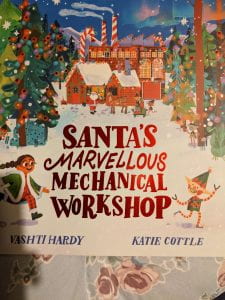
Scholastic, 9780702312281
“Santa’s Marvellous Mechanical Workshop” by Vashti Hardy and Katie Cottle is about moving house near to the Christmas holiday and how to keep the festive spirit. Lily has been unpacking all of her books and useful tools into her new room, when she finds an unknown wrapped parcel. It is an empty book that magically takes her to Santa’s workshop, so that she can help to re-purpose some broken toys. When she wakes up she can’t find the book or the elfbot who she had met in the workshop, however she soon sorts that out. A delightful story that will please those who are into STEM and recycling.
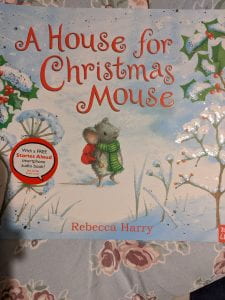
Nosy Crow, 9781788006903
“A House for Christmas Mouse” by Rebecca Harry is a warm and cuddly story of a young mouse who arrives in the forest, on Christmas Eve, looking for a new home. He meets a variety of animals on his travels and is able to help them with a variety of tasks, but then he has to go and find this home. When he eventually finds somewhere, it is cold and empty and frankly not very inviting. When he tries to ask for help, the other animals don’t seem to hear him, but when he get back to the new home, it has been magically transformed by his new friends. This leaves a warm glow, thinking about the true meaning of Christmas.

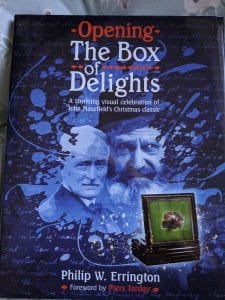 This is a story of deep fantasy, set during the Christmas period and with a young central hero who is pitted against some very dark and dastardly villains. The story was written in 1935, so we have a real sense of time, although the place itself is totally fictitious. The story centres around young Kay Harker as he travels to stay with family at Christmas. He meets with a mysterious old Punch and Judy man called Cole Hawlings, who gives him and old box to safeguard. However, the villainous Abner Brown and his hired thugs are also after the box; because this box allows the owner to travel through time! The story is full of action, adventure magic and fantasy and the twist at the end leaves you wondering if it was real, or just a dream. You really have to read the book and make up your own mind about that.
This is a story of deep fantasy, set during the Christmas period and with a young central hero who is pitted against some very dark and dastardly villains. The story was written in 1935, so we have a real sense of time, although the place itself is totally fictitious. The story centres around young Kay Harker as he travels to stay with family at Christmas. He meets with a mysterious old Punch and Judy man called Cole Hawlings, who gives him and old box to safeguard. However, the villainous Abner Brown and his hired thugs are also after the box; because this box allows the owner to travel through time! The story is full of action, adventure magic and fantasy and the twist at the end leaves you wondering if it was real, or just a dream. You really have to read the book and make up your own mind about that.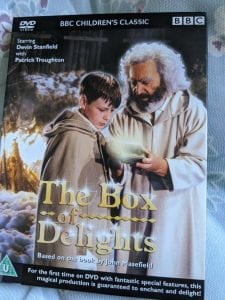 evident in the way that he writes about the author and his work. This work is a wonderful introduction to the life of Masefield and to his other works, but especially his role as the Poet Laureate. I must admit that my knowledge was limited to reading some of his poetry at school in Abingdon. It has just come as something of a surprise to discover that the great man was living only about 6 mile away, at Burcote, until his death in 1967 and that there is every possibility that I could have passed him in the street without knowing. We do indeed live in a very small world.
evident in the way that he writes about the author and his work. This work is a wonderful introduction to the life of Masefield and to his other works, but especially his role as the Poet Laureate. I must admit that my knowledge was limited to reading some of his poetry at school in Abingdon. It has just come as something of a surprise to discover that the great man was living only about 6 mile away, at Burcote, until his death in 1967 and that there is every possibility that I could have passed him in the street without knowing. We do indeed live in a very small world.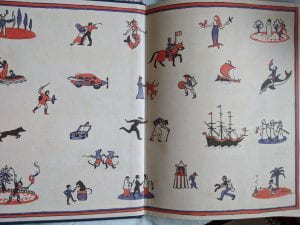

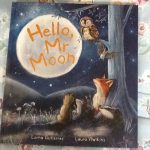 introduction to the cycles of the Moon, aimed at the youngest of readers. It is told in rhyme and can be read as both a story and as a source of information. Basically it is a conversation between the Moon and a small child who loves watching its changes. The illustrations are beautiful and use the dark blue of the night sky to balance the brightness of the Moon. This is brilliant for Foundation stage and beyond.
introduction to the cycles of the Moon, aimed at the youngest of readers. It is told in rhyme and can be read as both a story and as a source of information. Basically it is a conversation between the Moon and a small child who loves watching its changes. The illustrations are beautiful and use the dark blue of the night sky to balance the brightness of the Moon. This is brilliant for Foundation stage and beyond.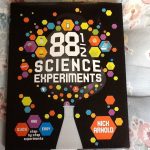 The author is well known in the education field and he has produced another clear and concise book about science. The book is divided into nine sections from magnetism to water and nature and there are a range of experiments within each area. As you would expect, there is a good glossary and index, so that this is useful as a class text as well as a library book. The pages are bright and clearly laid out. the text is logical and understandable with the processes being explained in an effective way. A lot of the ‘experiments’ do not require special equipment so they could be done in a classroom, or even at home.
The author is well known in the education field and he has produced another clear and concise book about science. The book is divided into nine sections from magnetism to water and nature and there are a range of experiments within each area. As you would expect, there is a good glossary and index, so that this is useful as a class text as well as a library book. The pages are bright and clearly laid out. the text is logical and understandable with the processes being explained in an effective way. A lot of the ‘experiments’ do not require special equipment so they could be done in a classroom, or even at home.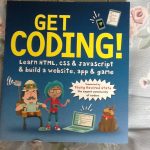 The book begins with the basics and then builds on these by creating various ‘Missions’, where the reader has to build pages and apps in order to move forward in their task. This is not something you can just dip in to, although I am sure that members of a younger generation will find it easier to follow. This is definitely one that my younger son would have loved in his youth, when he was just learning to program.
The book begins with the basics and then builds on these by creating various ‘Missions’, where the reader has to build pages and apps in order to move forward in their task. This is not something you can just dip in to, although I am sure that members of a younger generation will find it easier to follow. This is definitely one that my younger son would have loved in his youth, when he was just learning to program.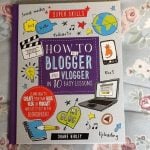 well laid out and actually understandable. For young people who want to blog and vlog this is a very good place to start; of course it is also definitely for those older people who want to have a go at setting up a blog. It lists the main blog sites but it might be useful for schools to know that WordPress have a separate blog host called Edublogs which is aimed specifically at those working in education and which has more safeguards that normal sites. Yes, that is what I am using as it is a very good and user friendly place to be.
well laid out and actually understandable. For young people who want to blog and vlog this is a very good place to start; of course it is also definitely for those older people who want to have a go at setting up a blog. It lists the main blog sites but it might be useful for schools to know that WordPress have a separate blog host called Edublogs which is aimed specifically at those working in education and which has more safeguards that normal sites. Yes, that is what I am using as it is a very good and user friendly place to be.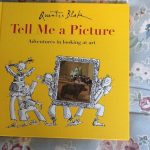 going on in the paintings. Unless the audience is knowledgeable about art they may well not differentiate between the two groups of artists. There is a section at the back of the book which gives thumbnail images and information about each piece of work. It is an excellent introduction to some major artists across the centuries.
going on in the paintings. Unless the audience is knowledgeable about art they may well not differentiate between the two groups of artists. There is a section at the back of the book which gives thumbnail images and information about each piece of work. It is an excellent introduction to some major artists across the centuries.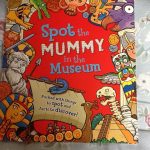 visiting a museum and gives information about some of the major civilizations that you are likely to see there. It is aimed at KS1 and asks the reader to search the pictures for hidden items that were important to various ancient cultures. This is bright and cheerful; it is divided into the various sections you might find in a museum but there is no contents, index or glossary.
visiting a museum and gives information about some of the major civilizations that you are likely to see there. It is aimed at KS1 and asks the reader to search the pictures for hidden items that were important to various ancient cultures. This is bright and cheerful; it is divided into the various sections you might find in a museum but there is no contents, index or glossary.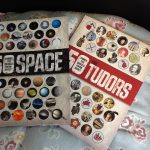 “50 things you should know about Space” by Professor Raman Prinja is another in this excellent series and the format is the same as the others. The contents page shows that the layout of the book and it starts with the history of the universe and how we have reached the state that exists today; then it looks at our solar system and each of the planets before finally covering the technology that has developed to allow us to explore the space around us. An excellent introduction to the subject.
“50 things you should know about Space” by Professor Raman Prinja is another in this excellent series and the format is the same as the others. The contents page shows that the layout of the book and it starts with the history of the universe and how we have reached the state that exists today; then it looks at our solar system and each of the planets before finally covering the technology that has developed to allow us to explore the space around us. An excellent introduction to the subject.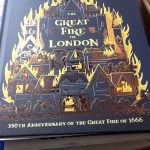
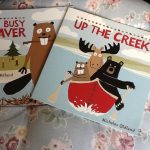 Moose, Beaver and Bear. Whilst the stories can be read just as picture books, they are also about friendship, sharing and also about the consequences to others when you do something without considering them. The stories and illustrations are amusing, colourful and full of personality as well as providing a lesson for young readers.
Moose, Beaver and Bear. Whilst the stories can be read just as picture books, they are also about friendship, sharing and also about the consequences to others when you do something without considering them. The stories and illustrations are amusing, colourful and full of personality as well as providing a lesson for young readers.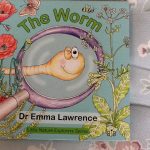 The book itself is small (18cm square) and a comfortable size for young readers. The illustrations are clear but almost childlike and there is an element of fun added by the cheeky and amusing worm that appears in all the pages. the words are limited to only two lines of rhyming text per page but they explain the subject manner in a concise and understandable way. You could read this as a story to young children, but the inclusion of an index allows for some degree of searching, although the information given is not always very obvious. This is a nice addition to the mini-beast collections of Foundation and KS1 classes.
The book itself is small (18cm square) and a comfortable size for young readers. The illustrations are clear but almost childlike and there is an element of fun added by the cheeky and amusing worm that appears in all the pages. the words are limited to only two lines of rhyming text per page but they explain the subject manner in a concise and understandable way. You could read this as a story to young children, but the inclusion of an index allows for some degree of searching, although the information given is not always very obvious. This is a nice addition to the mini-beast collections of Foundation and KS1 classes.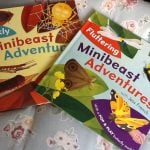 and very crawly creatures. The author is a zoologist and TV presenter, so she combines knowledge with the ability to connect with her audience. The illustrations and photographs are clear and accurate, whilst the text explains, without overwhelming the young reader. Even the size of the books is aimed at being comfortable for the small person. There is also a lovely surprise at the back of each book; one has a cut-out spider, whilst the other has a butterfly model. Altogether a well thought out series.
and very crawly creatures. The author is a zoologist and TV presenter, so she combines knowledge with the ability to connect with her audience. The illustrations and photographs are clear and accurate, whilst the text explains, without overwhelming the young reader. Even the size of the books is aimed at being comfortable for the small person. There is also a lovely surprise at the back of each book; one has a cut-out spider, whilst the other has a butterfly model. Altogether a well thought out series. grandson is going to love. it is full of every kind of tractor and bulldozer that he could imagine. The layout is by type of machine and where they are used so that you get a real idea of how the use has developed over the last 100 years. The illustrations are up o date, bright and easily link to the small and concise blocks of text. A great book for KS1 to read and for younger children to share with an adult.
grandson is going to love. it is full of every kind of tractor and bulldozer that he could imagine. The layout is by type of machine and where they are used so that you get a real idea of how the use has developed over the last 100 years. The illustrations are up o date, bright and easily link to the small and concise blocks of text. A great book for KS1 to read and for younger children to share with an adult.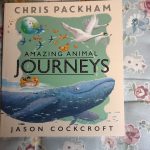 and then back again. Chris Packham is a well know and respected naturalist and he has chosen 15 widely different species to act as examples. Illustrations are used rather than photographs and this allows for some imagination to be added. Most of the images include a group of three children and this links the reading audience with the actual migratory process. Whilst there is not a huge amount of text it does give some fascinating information and acts as a springboard for those who want to go further in their research. It is a great book for KSI classes.
and then back again. Chris Packham is a well know and respected naturalist and he has chosen 15 widely different species to act as examples. Illustrations are used rather than photographs and this allows for some imagination to be added. Most of the images include a group of three children and this links the reading audience with the actual migratory process. Whilst there is not a huge amount of text it does give some fascinating information and acts as a springboard for those who want to go further in their research. It is a great book for KSI classes.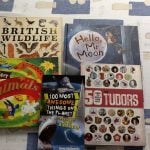 introduction to the world of nature for younger readers. The book is divided into into ‘chapters’ which are just two pages long and consist of beautiful illustrations of various examples of each subject. The text is limited to the names of the plant/animal and perhaps a short question for the reader to answer. It is a lovely book for browsing, but you need additional resources to add to the information.
introduction to the world of nature for younger readers. The book is divided into into ‘chapters’ which are just two pages long and consist of beautiful illustrations of various examples of each subject. The text is limited to the names of the plant/animal and perhaps a short question for the reader to answer. It is a lovely book for browsing, but you need additional resources to add to the information.